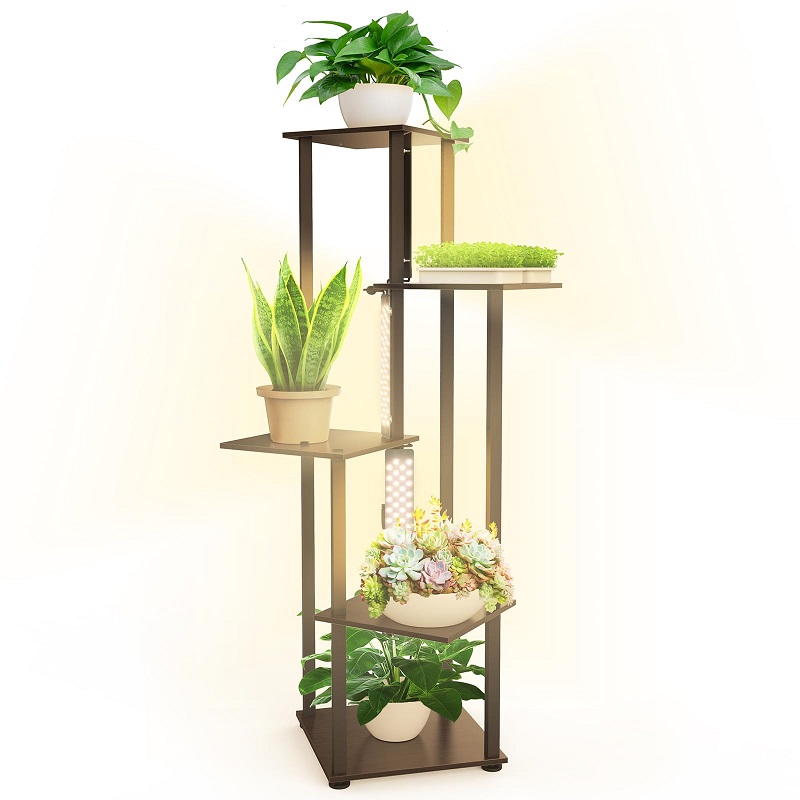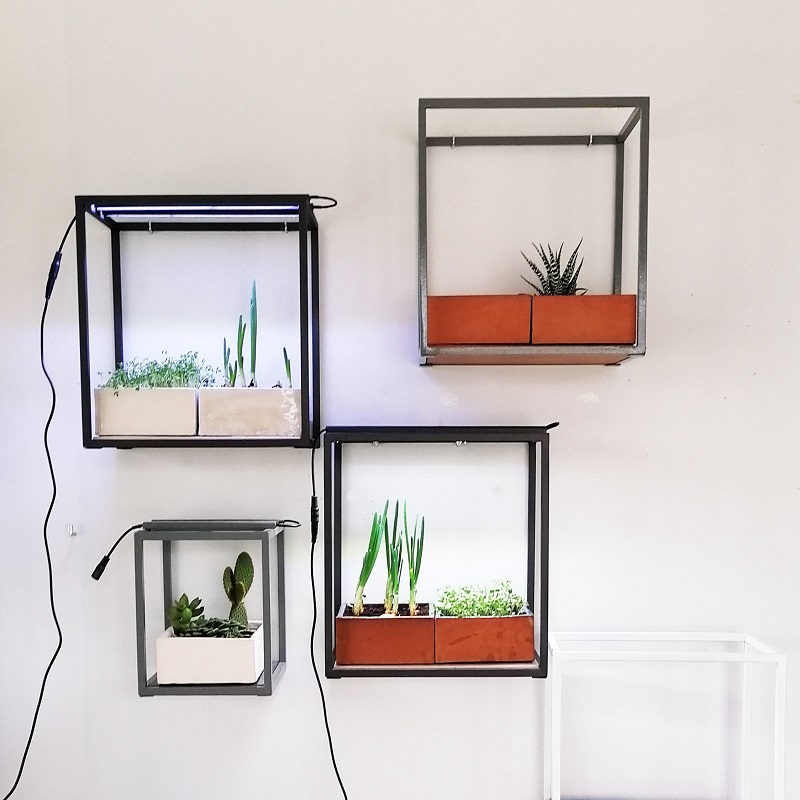Indoor gardening has surged in popularity, allowing enthusiasts to cultivate plants year-round, irrespective of outdoor conditions. Central to successful indoor gardening is the use of grow lights. This article delves into the best grow lights available, helping you maximize your plant shelf and ensure your plants thrive indoors.
Understanding Grow Lights
What Are Grow Lights?
Grow lights are artificial light sources designed to stimulate plant growth by providing the necessary wavelengths of light that plants need for photosynthesis. Unlike standard household lighting, grow lights emit specific light spectra that encourage plant development. These lights can be used in various settings, including homes, greenhouses, and indoor gardening systems.
Why Use Grow Lights?
Indoor environments often lack sufficient natural light, especially during winter months or in densely populated urban areas. Grow lights bridge this gap, enabling gardeners to grow a variety of plants, from herbs to flowering varieties. By providing consistent light conditions, growers can influence plant growth cycles, resulting in healthier and more productive plants.

Types of Grow Lights
LED Grow Lights
LED (Light Emitting Diode) grow lights are one of the most popular choices for indoor gardeners today. They are energy-efficient, long-lasting, and available in a range of spectrums tailored to different plant growth stages.
Benefits of LED Grow Lights
One of the most significant advantages of LED lights is their energy efficiency. They consume less electricity compared to traditional lighting, translating to lower energy bills. Additionally, LEDs produce minimal heat, reducing the risk of overheating plants. This allows for closer placement of lights to plants without causing damage. Furthermore, LEDs can be customized to emit specific wavelengths, catering to the diverse needs of various plants.
Fluorescent Grow Lights
Fluorescent grow lights have been used for decades in indoor gardening. These lights come in two main types: T5 and T8 tubes, which differ in size and energy efficiency.
Advantages of Fluorescent Lights
Fluorescent lights are relatively affordable and readily available, making them an accessible option for novice gardeners. They produce a broad spectrum of light and are especially effective for starting seedlings or growing leafy greens. While they may not have the intensity needed for flowering plants, they are ideal for low-light conditions and can be used in conjunction with other grow lights for enhanced results.
Choosing the Right Spectrum
Understanding Light Spectra
Plants require different light wavelengths for various growth stages. The spectrum can be broadly categorized into blue, red, and green light, each playing a unique role in plant growth.
The Role of Blue Light
Blue light is crucial during the vegetative stage of plant growth. It promotes leaf development and overall plant health. Grow lights that emphasize blue wavelengths are particularly beneficial for seedlings and leafy greens, ensuring robust growth.
The Importance of Red Light
Red light becomes essential as plants transition to the flowering and fruiting stages. This spectrum encourages blooming and fruit production. Many growers opt for full-spectrum lights, which provide a balance of both blue and red light, ensuring plants receive adequate wavelengths throughout their growth cycle.
Evaluating Light Intensity
Measuring Light Output
Light intensity is another critical factor when selecting grow lights. Measured in lumens or PAR (Photosynthetically Active Radiation), understanding light output helps gardeners choose the right lights for their plants.
The Need for Different Intensities
Different plants have varying light requirements. For instance, succulents and flowering plants generally need higher light intensities compared to shade-loving plants like ferns. Assessing your plant’s needs will guide your choice, ensuring optimal growth conditions. Using a light meter can help you measure the intensity of your grow lights, allowing for precise adjustments.
Recommended Intensity Levels
For most houseplants, a light intensity of 1,000 to 2,000 lumens is typically sufficient. However, for more light-hungry plants like tomatoes or peppers, you may need to provide 3,000 lumens or more. It’s essential to adjust the distance of the light source from the plants based on the intensity, ensuring they receive enough light without getting scorched.

Positioning Your Grow Lights
Ideal Placement for Maximum Efficiency
The placement of grow lights is vital for ensuring even light distribution across all your plants.
General Guidelines for Positioning
Typically, grow lights should be positioned 12 to 36 inches above the plants, depending on the light type and intensity. It’s essential to monitor your plants for signs of light stress, such as leaf burn or stretching. Adjust the height as necessary to maintain optimal growing conditions.
Utilizing Adjustable Fixtures
Using adjustable fixtures can make it easier to reposition your lights as plants grow. Hanging lights from adjustable chains or using telescopic stands allows for flexibility, ensuring that your plants always receive the right amount of light, regardless of their height.
Setting the Right Light Cycle
Understanding Photoperiodism
Plants have natural light and dark cycles that influence their growth. This phenomenon, known as photoperiodism, dictates how plants respond to varying light durations.
The Importance of Light Duration
Most plants require 12 to 16 hours of light per day during their active growing seasons. However, some plants may thrive on shorter light cycles, especially those that are naturally adapted to shaded environments. It’s crucial to research your specific plant varieties to determine their ideal light duration and adjust your grow lights accordingly.
Automation for Consistency
Using timers can help automate light cycles, ensuring your plants receive consistent lighting without the need for daily adjustments. This not only simplifies the process but also helps maintain the health of your plants, reducing the risk of stress caused by irregular light exposure.

Cost Considerations
Budgeting for Grow Lights
Investing in grow lights can be a significant expense, but it’s essential to view it as an investment in your gardening success.
Evaluating Initial Costs vs. Long-term Savings
While high-quality LED lights may have a higher upfront cost, their energy efficiency and longevity can lead to savings in the long run. On the other hand, fluorescent lights are generally more affordable but may need more frequent replacements. It’s vital to consider your gardening goals, the types of plants you’re growing, and how much you’re willing to invest to determine the best option for your setup.
Exploring Options for Every Budget
Fortunately, there are grow lights available at every price point. For beginners, affordable fluorescent fixtures can be a good starting point. As your gardening skills advance, investing in higher-end LED lights can significantly enhance your growing experience.
Additional Features to Consider
Dimming and Color Adjustment
Many modern grow lights come with features such as dimming capabilities and adjustable color spectra. These features allow you to customize light settings based on your plants’ specific needs at various growth stages.
The Benefits of Adjustable Features
Being able to adjust light intensity and color can enhance plant growth by ensuring they receive optimal light conditions. For example, increasing red light during flowering can significantly boost yields.
Smart Grow Lights
The emergence of smart technology in gardening has led to the development of smart grow lights that can be controlled via smartphone apps. These lights can adjust automatically based on environmental conditions, ensuring that your plants always receive the optimal light.
Maintenance and Care for Grow Lights
Cleaning Your Lights
Regular maintenance of your grow lights is essential for ensuring maximum efficiency. Dust and grime can accumulate on light fixtures, reducing their output and effectiveness.
Best Practices for Cleaning
To clean your lights, turn them off and unplug them. Use a damp cloth or sponge to wipe down the surfaces, being careful not to let moisture seep into electrical components. Regular cleaning every few weeks can help maintain optimal light output.
Monitoring for Performance
Keeping an eye on the performance of your grow lights is crucial. Over time, even the best lights can lose intensity. Periodically check the output and replace bulbs or fixtures as needed to ensure your plants are receiving adequate light.
Creating a Sustainable Indoor Garden
Importance of Environmental Considerations
While grow lights are essential for indoor gardening, it’s equally important to consider the broader environmental impacts of your gardening practices.
Building a Balanced Indoor Ecosystem
Creating a balanced indoor ecosystem involves not only providing adequate light but also considering factors like humidity, temperature, and air circulation. Combining the right grow lights with proper care and attention to the overall environment can lead to thriving indoor gardens.
Conclusion: Elevating Your Indoor Gardening Experience
Maximizing your plant shelf with the right grow lights can transform your indoor gardening experience. By understanding the different types of grow lights, their spectra, intensity, and proper positioning, you can create an optimal environment for your plants. Investing in high-quality grow lights not only supports plant growth but also enhances your enjoyment of gardening year-round. With the right knowledge and tools, you can cultivate a flourishing indoor garden that brings life and beauty to your home.
